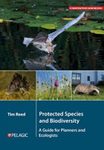![Sustainable Governance of Wildlife and Community-Based Natural Resource Management Sustainable Governance of Wildlife and Community-Based Natural Resource Management]()
Click to have a closer look
About this book
Contents
Customer reviews
Biography
Related titles
About this book
This book develops the Sustainable Governance Approach and the principles of Community-Based Natural Resource Management (CBNRM). It provides practical examples of successes and failures in implementation, and lessons about the economics and governance of wild resources with global application.
CBNRM emerged in the 1980s, encouraging greater local participation to conserve and manage natural and wild resources in the face of increasing encroachment by agricultural and other forms of land use development. This book describes the institutional history of wildlife and the empirical transformation of the wildlife sector on private and communal land, particularly in southern Africa, to develop an alternative paradigm for governing wild resources. With the twin goals of addressing poverty and resource degradation in the world's extensive agriculturally marginal areas, the author conceptualises this paradigm as the Sustainable Governance Approach, which integrates theories of proprietorship and rights, prices and economics, governance and scale, and adaptive learning. The author then discusses and defines CBNRM, a major subset of this approach. Interweaving theory and practice, he shows that the primary challenges facing CBNRM are the devolution of rights from the centre to marginal communities and the governance of these rights by communities, a challenge which is seldom recognised or addressed. He focuses on this shortcoming, extending and operationalising institutional theory, including Ostrom's principles of collective action, within the context of cross-scale governance.
Based on the author's extensive experience Sustainable Governance of Wildlife and Community-Based Natural Resource Management will be key reading for students of natural resource management, sustainable land use, community forestry, conservation, and development. Providing practical but theoretically robust tools for implementing CBNRM it will also appeal to professionals and practitioners working in communities and in conservation and development.
Contents
1. Introduction: poverty, conservation and governance
2. The emergence of Man, governance and rules
3. A brief history of Man’s impact on the planet
4. Institutions and ungoverned spaces
5. Proprietorship
6. Price, markets and exchange
7. The institutional history of wildlife and its governance
8. Changing the game
9. Assessing the economics of wildlife – tools and lessons
10. The Sustainable Governance Approach
11. Kindling CBNRM – history and lessons from CAMPFIRE in Zimbabwe
12. Does it take a Village? Is there a difference between participatory and representation governance?
13. The global emergence of CBNRM practice and theory
14. The application of theories of micro-governance to CBNRM
15. Implementing CBNRM
16. Participatory governance and revenue distribution in practice
17. Conclusions
Customer Reviews
Biography
Brian Child is an associate professor in the Department of Geography and Center for Africa Studies at the University of Florida, Gainesville, USA and Professor Extraordinary in the School of Public Leadership at the University of Stellenbosch, South Africa. As a wildlife practitioner from southern Africa, he previously managed the CAMPFIRE programme in Zimbabwe and acquired experience in private conservation and park management.






































